May 18, 2018
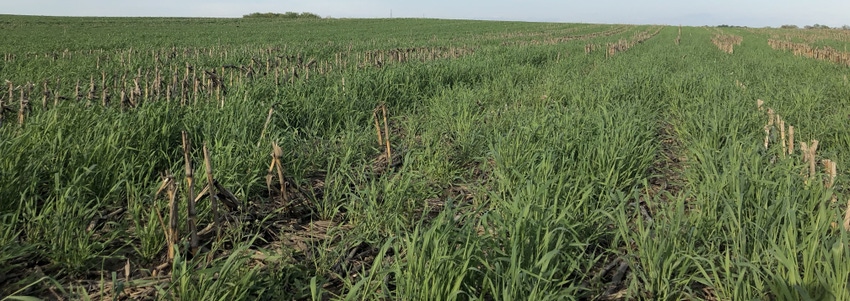
Source: Wisconsin Weed Science
By Rodrigo Werle (UW-Madison Extension Cropping Systems Weed Scientist) and Dan Smith (UW NPM Southwest Wisconsin Regional Specialist)
Fall-planted cereal rye is increasingly used as a cover crop to protect the soil during winter and spring in corn and soybean cropping systems across the Midwest. Our recent survey indicated that 77% of Wisconsin farmers and Ag professionals are interested in cover crops.
Fall-planted cereal rye is growing rapidly in southern Wisconsin and across the Midwest and it’s important to have a termination plan in mind prior to crop establishment. The following pictures demonstrate cereal rye growth in 10 days:
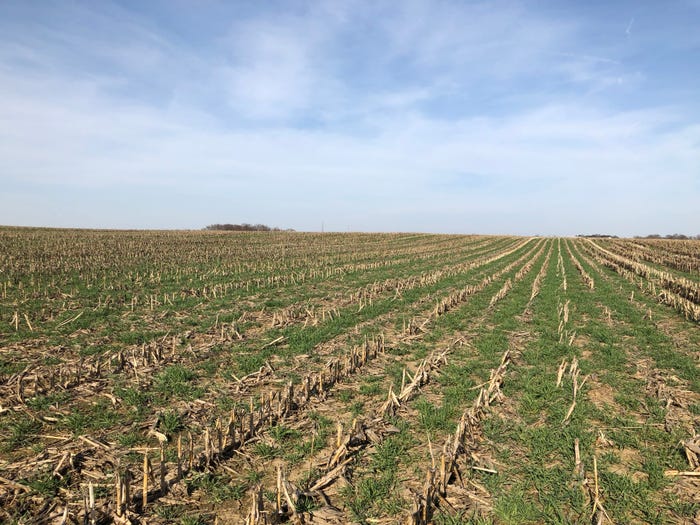
Figure 1. Picture of a cereal rye cover crop field in south-central Wisconsin taken on April 30, 2018.
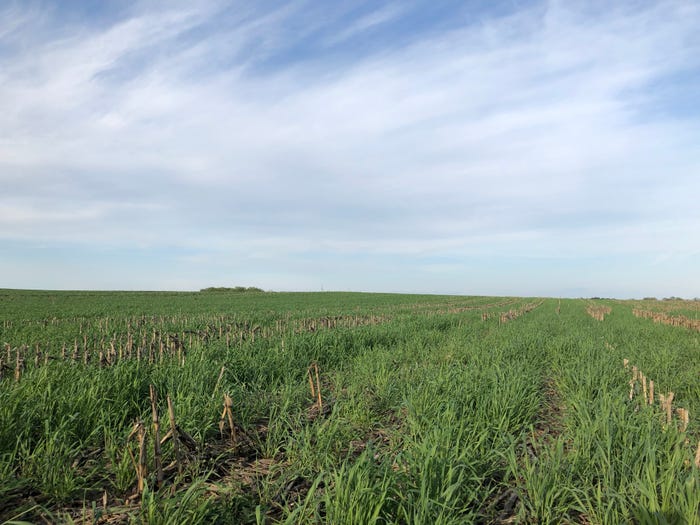
Figure 2. Picture of the same cereal rye cover crop field in south-central Wisconsin taken on May 10, 2018.
Cereal Rye Cover Crop Termination
According to the NRCS Cover Crop Termination Guidelines, fall-planted cereal rye cover crop should be terminated at or within 5 days after planting but before crop emergence in Wisconsin non-irrigated fields. The NRCS guidelines were developed to help producers maximize conservation benefits from cover crops, while minimizing crop yield loss by conserving adequate soil water. See Cover Crops and Crop Insurance in Wisconsin for additional information.

Figure 3. NRCS cover crop termination zones.
UW-Madison and other researchers across the Midwest recommend terminating cover crops before crop planting (see: Cover Crops Do’s and Don’t’s).
Cereal Rye Cover Crop Termination Options
Herbicides
Research conducted in Missouri showed that 28 fl oz of Roundup (glyphosate) provided satisfactory control of cereal rye (Figure 4). The early termination treatment (early-April) resulted in slightly better control than the later termination treatment (early-May). Glyphosate efficacy decreases when plants reach reproductive stages. The contact herbicide Gramoxone was also tested and was not as effective as glyphosate.
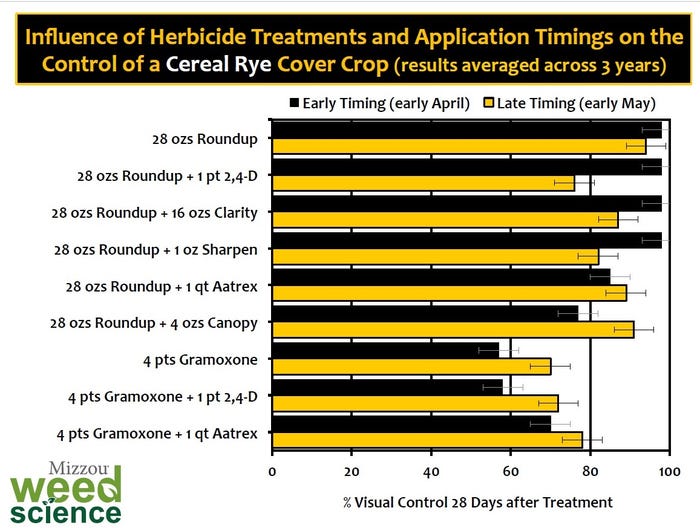
Figure 4. Influence of herbicide treatments and application timings on the control of cereal rye cover crop (results averaged across 3 years of research in Missouri). Data collected by Dr. Kevin Bradley’s research group at the University of Missouri.
Research conducted in Wisconsin also demonstrated that glyphosate provided successful termination of cereal rye (see: Termination of winter rye and annual ryegrass using glyphosate).
Roller-crimper
According to research conducted in Pennsylvania, roller-crimpers can be used effectively for cereal rye termination after the boot stage (Figure 5). Although not widely used across the Midwest, the use of roller-crimpers is a viable strategy for producers that would like to have additional biomass in the spring before crop planting and use a mechanical strategy for cover crop termination rather than herbicides.
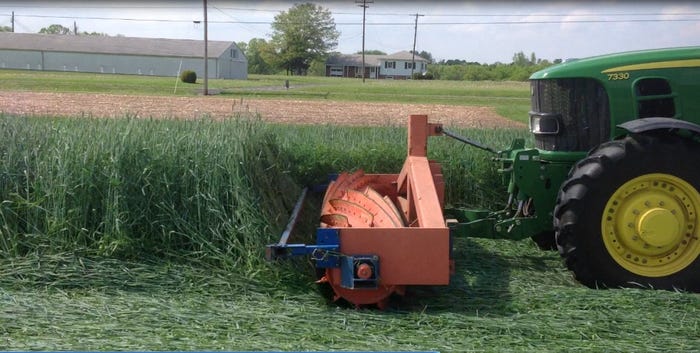
Figure 5. Roller-crimper rolling down cereal rye cover crop in Pennsylvania. Picture obtained from the USDA Integrated Weed Management Resource Center Website.
For additional information on roller-crimpers, watch the video: Advances using the roller-crimper for organic no-till in Wisconsin.
Final considerations
If glyphosate is used for cereal rye termination, it should be sprayed when day temperatures are above 55° F and night temperatures are above 40° F. For more effective cereal rye control, glyphosate should be applied before the boot stage.
Contact herbicides such as Gramoxone and Liberty may be used for cereal rye termination; however, they may not provide adequate control if the cereal rye is at boot or later stages. As with any contact herbicide, practices to improve spray coverage will improve efficacy (e.g. medium spray droplet size and higher application rates [GPA]).
If cereal rye will be harvested for forage, herbicides should be sprayed after harvest and biomass removal from the field to control the cereal rye regrowth.
If a legume is part of the cover crop mix, using a growth regulator herbicide such as 2,4-D or dicamba will enhance termination (see planting restrictions prior to selecting a growth regulator for cover crop termination).
If glyphosate-resistant weeds are established at cereal rye termination (e.g., marestail, giant ragweed), adding herbicides such as 2,4-D and/or Sharpen to the tank-mix will assist with their control (see label for planting restrictions).
Late termination of cereal rye may reduce the yield potential of the main crop from excessive soil water use, temporary sequestration of plant available nutrients that are critical for the early development of the subsequent cash crop (particularly nitrogen for corn), and/or excessive amounts of residue that can difficult planting.
Cover crops may suppress troublesome weeds, but typically do not provide complete weed control alone. Combining cover crops and herbicide programs (including PRE-emergence herbicides) can be a powerful strategy for weed management.
For additional information on herbicide options, check the Pest Management in Wisconsin Field Crops UWEX Bulletin A3646 (PDF). Always check the herbicide labels before application. Producers are encouraged to visit with their insurance provider when deciding the time for cover crop termination as local rules may be different.
Originally published by Wisconsin Weeds.
You May Also Like




